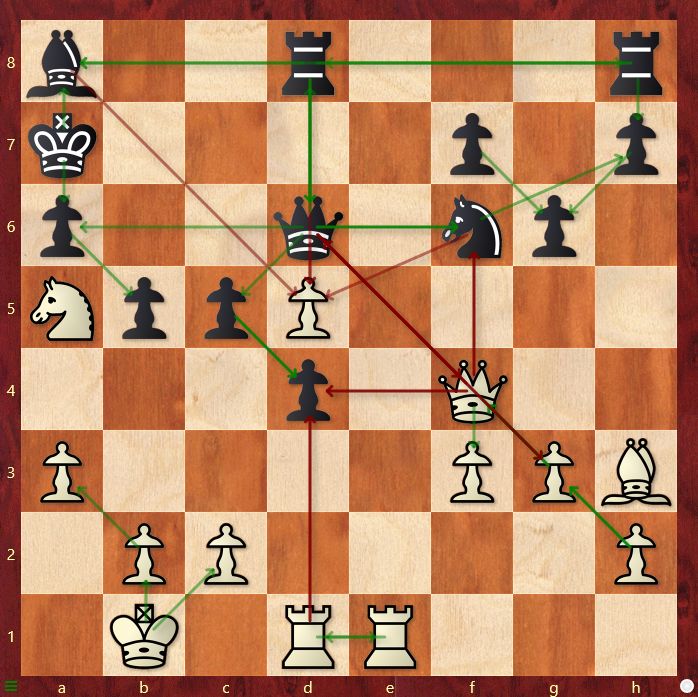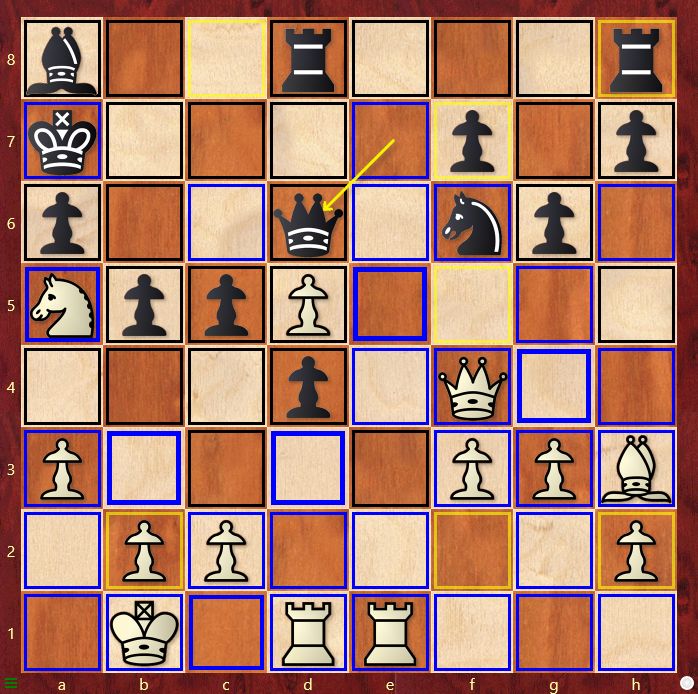.jpeg)

.jpeg)
Let’s delve into each one of the options and understand them.

At the bottom left of a game replay board you see a small green "hamburger menu" (three bars), which when clicked yields three options. This is what each of them does:
A pretty straightforward and self-explanatory choice. It shows all of the “attacks” in red and the “defences” in green. This can be very useful when determining pieces that are en prise and can assist with understanding the manoeuvring and placement, to ensure that the pieces are guarded.
Here is the game of Kasparov vs Topalov, played in Wijk Ann Zee 1999, generally known as Kasparov’s immortal game! The game has been extensively analysed, but can ChessBase assist with deciphering the following headache-giving position?

This was the pivotal point in the game. “Show attackers and defenders” from which we can tell at a glance which pieces are attacked, how often, which are defended, and how often. Kasparov played the stunning 24.Rxd4! cxd4 25.Re7+! and won one of the most brilliant games of his career.
This is one of my personal favourites, on the one hand due to its aesthetics, but also because of its ability to determine whether a piece is well-placed! And the best part is that it changes situationally. Let us look at an example to understand it.

As you can see, the black rook has the brightest colour and thus seems to suggest that it is best placed, which is evident due to its role in restricting the white king's activity.
On the other hand, the white king has a lime yellow colour behind it, because of its unusual placement and the chances of Black's attack upon it.
The black pawn has a crimson red colour because it is not supported by any black pieces and thus can be a vulnerability!
This is intended to give you an instant visual impression of the strong and weak pieces in any given position.
What the position quoted above looks like with visual evaluation switched on?

Going piece by piece, the white king has a neon turquoise colour behind it, suggesting that it seems safe, quite adverse to the black king suffering at a7 (thus a light green). It is particularly interesting that the white knight on a5 that is given a green shade, even though it is placed "on the rim” – this suggests that the ChessBase board is intelligent enough to understand the crucial role of the knight in the attack that ensues!
We can also look at the key position of Kasparov vs Topalov using “Strong squares and spaces”, which give us the following board:

A confusing sight at first, but as you look into it further, it makes more sense. This feature is particularly useful at identifying some of the weak squares in comparison with the stronger spaces (as the name suggests!). The blue represents those which are in White’s control, while the Black outlines represents the Black’s strong spaces. Pay close attention to the weight of these outlines, as the thickness increases, it emphasises the importance as well as the firm control of the square! For instance, e5 is a vital square (being a central square) and with the queen and rook also attacking it, the balance tilts towards White!
There you have it! Three features present on the ChessBase board that can assist in analysing a position both tactically as well as strategically! While they may seem complicated at first, they are a useful tool in understanding the pros and cons of a position – with just a click. So what are you waiting for? Try it out right now with ChessBase 17!
Incidentally, this week, from July 1st to 7th, 2024 you can get the ChessBase 17 + Fritz 19 at a substantial discount price. Here are details of the Summer Special offer.
| Advertising |